Understanding Triathlon Energy Systems for Performance

- Triathletes who want to train smarter and race harder
- Athletes who want to understand the physiology behind sport

IN THIS ARTICLE
Fortitude and resilience are not limitless.
Your glycogen stores aren't limitless, either.
Every second of flaming lungs & burning muscles chips away at our mental and physical capacity.
Triathlon blends physical & mental endurance with strategy and grit. It demands the body delivers its best during each race segment to unleash an athlete's full potential. The foundations of multisport performance start with an understanding of the body's energy systems.
It doesn't matter if you're training for a sprint or an Ironman. Knowledge of these energy systems underpins all triathlon training. Tailor your training to improve the body's ability to leverage these energy pathways. Doing so will boost your triathlon performance, providing the physical and mental strength to train smarter and race harder.
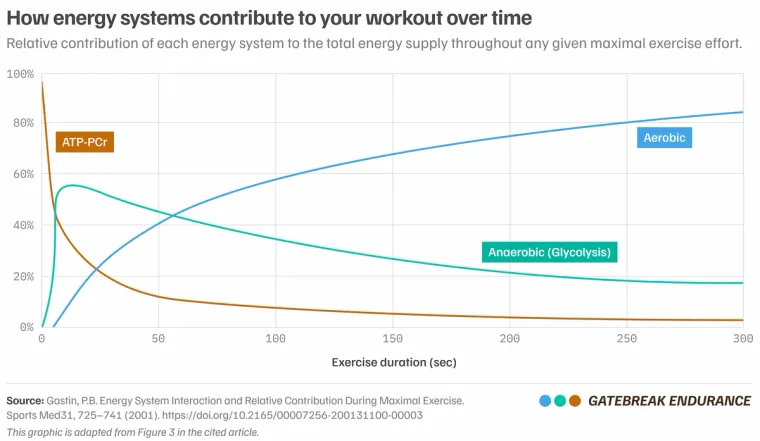
What are the Energy Systems Used in Triathlon?
The human body relies on three primary energy systems to fuel endurance activities. Each energy pathway plays a distinct role in generating fuel for training, racing, and every day in between.
Here's an overview of each energy system:
- Creatine Phosphate ATP-PC System – Responsible for short, sudden, and explosive bursts of power lasting 1-15 seconds. Think diving into a pool or hitting a 1 rep-max in the gym
- Anaerobic Glycolytic Energy System – Engaged during high-intensity efforts lasting between 10 seconds and 2 minutes, like during 400m sprints
- Aerobic Energy System – Takes over for sustained low-moderate-intensity efforts lasting more than two to three minutes, like the bike portion of an Ironman Triathlon or running a marathon
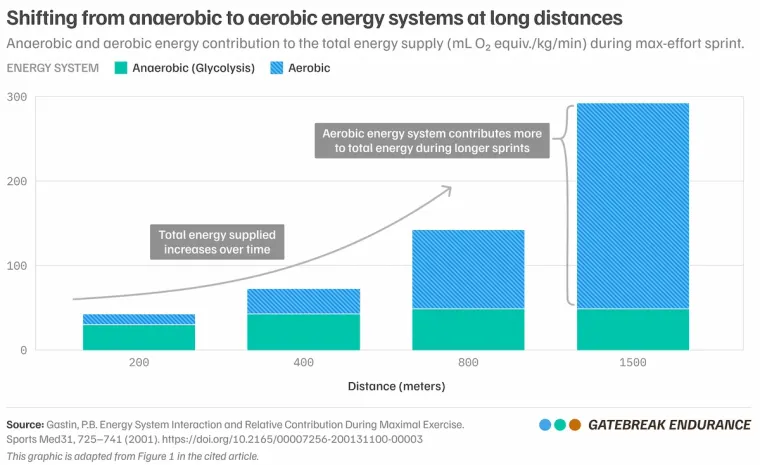
How Triathlons Engage Each Energy System
Each of these energy systems plays a critical role in your race day performance. You'll shift between each one at different points of the race.
The ATP-PC system kick-starts your race as you transition from land to sea. The anaerobic glycolytic energy system will help you overtake competitors on the bike leg. The aerobic energy system will sustain you as you tick off the miles during the run. And then, in the last few hundred meters of the race, you'll dig deep into your reserves. This again engages the glycolytic energy system to propel your across the finish line with a sprint finish.
ATP-PC Energy System
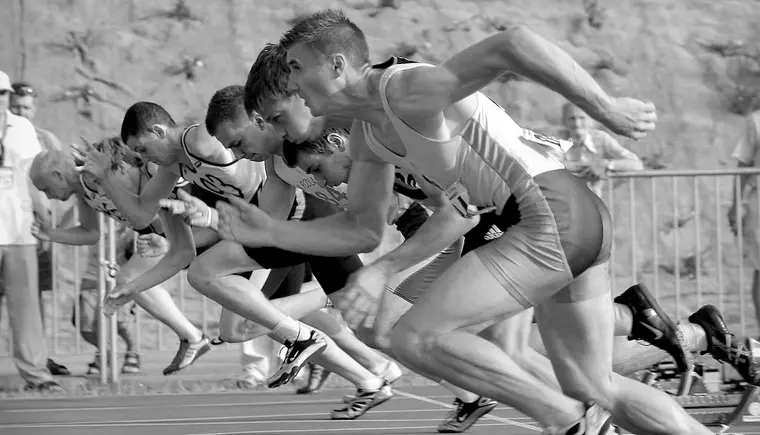
The ATP-PC energy system fuels explosive, high-intensity efforts lasting up to 10-15 seconds. You'll engage this system when starting a race and during flying bike mount transitions. Also called the "phosphogen system", it uses phosphocreatine in muscles to generate ATP without consuming oxygen in the process.
Key Features:
- Rapid energy delivery for sudden, explosive movement
- Quickly depleted and requires significant recovery time
While not a primary focus for triathletes, this system plays a role during race starts, transitions, and sprints. Heavy weight lifting (1 rep-max) and fast sprint intervals can enhance your ATP-PC system's capacity and your ability to recover.
Optimizing the ATP-PC Energy System for Triathlon
To train this system effectively, focus on short, high-intensity efforts. Recovery between intervals is critical. Phosphocreatine energy stores are in short supply. Your reserves quickly deplete and require rest to replenish.
Without adequate rest, your body will start utilizing the glycolytic energy system. To keep your training intensity targeted, aim for a 1/10 or 1/6 ratio of work to rest. So, for every 10 seconds of work, rest for ~60-90 seconds.
Anaerobic Glycolytic Energy System
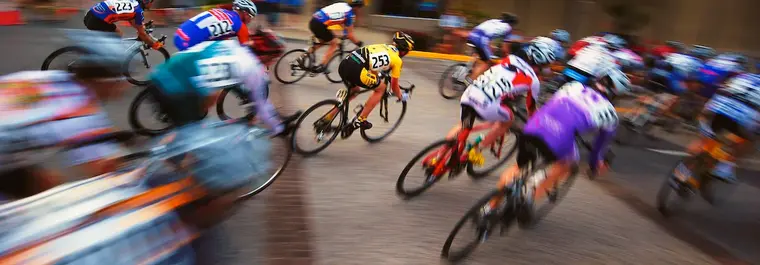
This system serves as a crucial middle ground, connecting our body's fastest energy source (the ATP-PC system) with our endurance-based aerobic energy system. It delivers substantial power output for activities that are too long for immediate energy but too intense for pure aerobic metabolism. This makes it perfect for high-intensity efforts lasting a couple of minutes. The anaerobic energy system functions in the absence of oxygen and primarily powers intense physical activities that last between 10 seconds and 2 minutes.
Key Features:
- An anaerobic system, so it functions without oxygen
- Produces ATP faster than the aerobic system but less efficiently
- Oxygen scarcity leads to lactate accumulation (lactic acid buildup causes muscle fatigue)
Unleashing the Anaerobic Energy System in Triathlon
For triathletes, the anaerobic system supports critical race moments, such as overtaking competitors while cycling or sprinting ahead in the final stretch. Training the anaerobic system includes interval workouts at higher intensities, targeting efforts near the anaerobic threshold.
Aerobic Energy System
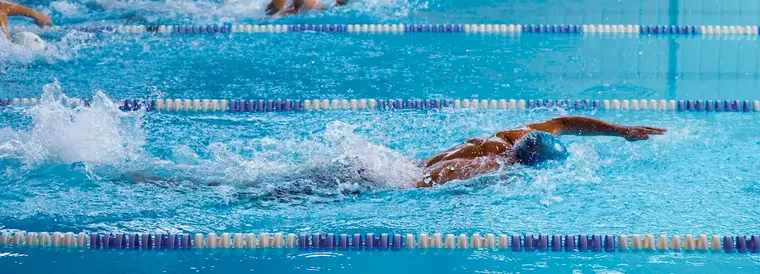
The aerobic energy system is the backbone of endurance sports and the dominant energy system employed during triathlon training and racing. The system becomes the main energy source for activities lasting longer than 2-3 minutes.
Unlike anaerobic systems, this pathway generates energy by breaking down fatty acids and glucose in the presence of oxygen.
Key Benefits of Aerobic Training:
- Essential for all three triathlon disciplines (swim, bike, run)
- Improved fat utilization as a fuel source, sparing glycogen stores
- Increases mitochondrial density (increasing the number of energy factories increases your endurance capacity)
- Enhances cardio capacity and VO2 max, allowing athletes to sustain higher work rates over longer periods
Training the Aerobic System for Triathlon
Training at moderate intensities is crucial for developing your aerobic foundation. Specifically, Zone 2 training—where your heart rate stays between 60-75% of your maximum—triggers key physiological adaptations that enhance your aerobic capacity. Exercising at this lower intensity allows the body to create energy with oxygen, which improves efficiency. This allows endurance athletes to maintain aerobic efforts for hours on end.
This type of training goes beyond simply accumulating hours in swimming, cycling, and running. It systematically builds the endurance base that supports all your other training. These sustained, low-intensity training sessions should form the cornerstone of your year-round training plan, with their duration gradually increasing as you approach your target races.
For endurance training, steady, remember that consistency beats intensity. Endurance athletes unlock more aerobic potential by maintaining frequent sessions as opposed to sporadic bursts of hard training.
How Triathlons Engage Each Energy Systems
Well-trained triathletes develop the ability to race efficiently across different energy systems. During shorter endurance events like sprint triathlons, they can effectively tap into their anaerobic capacity for bursts of speed. However, their real advantage often shows in how they manage race intensity.
A seasoned athlete might maintain what seems like a fast pace while primarily using their aerobic system, keeping their effort controlled and sustainable. Meanwhile, a less experienced competitor might need to rely on anaerobic energy to maintain the same speed, leading to earlier fatigue. This efficiency difference means the trained athlete can race faster while actually working at a lower relative intensity - a key advantage that comes from consistent training.
Energy System Requirements for Different Triathlon Distances
All triathlon events uniquely challenge all three energy systems and capacity of participants. Different courses, event distances, and race-day conditions can impact energy system engagement. Choppy surf might throw off your swim, and a poor pacing on a hilly course can push your aerobic capacity.
Sprint distance triathlons rely heavily on both anaerobic and aerobic systems. The higher intensity requires a greater contribution from the glycolytic system, especially during the bike and run segments. You'll find that competitive athletes at these events are working near their anaerobic threshold.
Anaerobic ThresholdsThe anaerobic threshold is the point during exercise where lactate production exceeds the body's ability to utilize it, which leads to lactate accumulation in the blood. The threshold represents the highest exercise intensity that you can sustain an extended period without significant lactate buildup.
The energy system requirements for Olympic triathlons differ from the sprint distance events. These races predominantly engage the aerobic system. A strong anaerobic foundation still provides a competitive advantage during strategic race opportunities, like tackling hills on the bike and passing competitors during the run.
Moving into long-distance triathlon events increases energy demands placed on the aerobic system. Athletes spend considerably more time on the bike and run than during a shorter distance triathlon. Competitive athletes may still engage the anaerobic system during strategic moments, but many athletes will remain in aerobic zones for the majority of the race.
Full distance Ironman races favor the aerobic energy system for most athletes. Proper pacing is imperative, as even the fatigue induced by short anaerobic efforts can cause serious consequences later in the race.
Triathlon Energy Systems
You could study each of these energy systems individually at the post-graduate level. This post only scratches the surface.
Fortunately, you don't have to write a dissertation to glean the information necessary to tailor your training to the demands of the sport. This post is a quick overview of the energy systems used in triathlon. Use it as a jumping off point to learn more about exercise physiology and remain a lifelong student of the sport.
